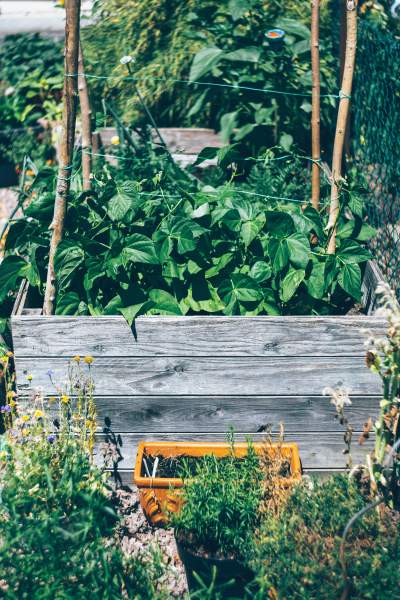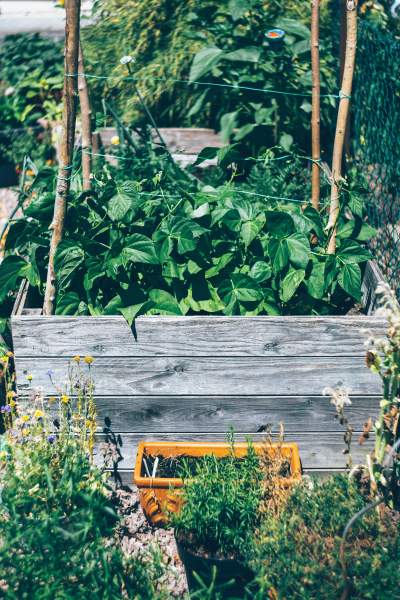A smart way to increase your gardening will be lightened with the growing of raised beds and improve the aesthetic of your garden. If you are new to gardening reduce the margin for error with the help of growing raised bed.
Raised bed gardening is not the perfect technique for getting success. But every technique should have certain mistakes to hide the success.
If you have limited space for gardening, then the raised bed gardening is perfect. Here are the best tips to fill your raised beds for cheaper and also made the pallet gardens which are fit in the space. Raised bed technique is a better choice to do but it requires more work and effort.
1. Raised beds are too wide
One of the best advantages of the raised bed gardening is to avoid soil compaction. You can easily work on them without stepping into it. Which gives ultimately strong and healthier plants due to better soil structure?
The gardening raised beds width is too large then it prevents you while working on it within your reach, so you have stepped inside the bed it will defeat the major purpose of the raised bed.

Because of this reason raised beds are not more than four feet wide. Without any issue or problem, most of the people will reach within the center comfortably in four feet wide raised bed. I have experienced about this four feet wide span is more comfortable for me.
While choosing your raised bed, firstly you have to consider the location of the bed where to place it. If the location must be next to fence. I recommend not exceed than thirty inches with this you can work on it easily from one side itself.
2. Don’t plan to irrigation
Hand watering is good for irrigation but you have to plan how to irrigate the beds within a specified time with new techniques.
Mostly I recommend drip irrigation or soaker hoses for raised beds. If you have a large number of raised beds then drip irrigation is fine for that and it works great and cost less also. Soaker hoses are for a few raised beds they will perform fine.
Also Read: Importance of farming in our life
3. Unsafe material used
It is important to know where you live and how was the climate then decide what kind of material should be used to build raised beds. Wood is a common choice for the raised bed because it is inexpensive and easy to obtain.
But don’t use the pressure-treated wood for raised beds because before 2003 manufactured pressure-treated wood contains chromate copper arsenate and it will harmful.
Many people are using chemical-free and rot-resistant wood such as cedar or redwood but it was somewhat expensive.
Before build raised beds, do you research first and avoid old railways ties which contain creosote which is harmful to human and plants also.
4. Lack of nutrients in soil
Are you thinking about using native soil which is cheap because it is already there? But most of them don’t have good soil to start with. Then you have to test the soil you will get the information about the soil and decide it can amend your native soil to work with it or you have to start from starch.
The best thing for raised beds is by using a combination of garden soil with compost. But it depends upon your budget and availability.
5. Skipping to mulch
Normal gardens cant dry as quickly as raised beds so keep your plants happy with the help of mulching it will retain moisture and cut down on weeds.
In wet seasons it acts like a sponge absorbs the water while excess rainfall in dry times and it will regulate the moisture in heat of summer. You can compare mulched raised beds healthier than without them.
6. Neglecting your pathways
Harmful chemicals used nearby raised beds can destroy your garden. Even if you used these kinds of chemicals in your yard the toxins can flow through the wind into the beds and kill your plants. So take precautions for the safety of your raised beds from harmful chemicals.
The pathways among your raised beds will likely develop weeds and grass at a few points. However, in preference to making plans to mow and spray them, you may create a barrier. Flattened cardboard containers with a small layer of natural mulch on the pinnacle are a clean cure, and the substances will remain longer than different options.
7. Label everything
The one common mishap goes for all gardening, but it is always repeating. Label your plants while planting them and what they are. You can also use it to set up a spreadsheet or else label them physically in the beds.
This is very important while dealing with boxes of dirt it looks like the same until the growth will be started. So you can’t get an idea about the things that are growing in the eastern corner of the fourth bed until the end of July.
Also Read: Growing the Microgreen Broccoli
8. Failing Poly tunnels
If you do not connect the tunnel to the raised bed, you will seriously miss the opportunity. You already have the ideal setup for a raised bed tunnel. You can easily extend the growing season on both sides by building flower beds on them. Once the spring gets warmer, you can remove the tunnel and add it back when the weather gets cold again at the end of the season.
9. Orientation
If you planting your garden in the wrong place is a big mistake and it is very difficult to correct or relocate the correct location once you fill the soil in the raised bed, watering system, and plants too.
Now set up the raised beds as per the sun rays fall on the plants. It requires five to six hours of sunlight each day for vegetable plants.
Placing plants north-south side is better to get sunlight. It will receive the maximum amount of sunlight.
10. Doing the same crop every year in the same location
You can rotate your crops for a single year because it will overrepresented certain fungal diseases, nutrients, and pests in the soil if you don’t rotate the crop in the field. While planting thought about the same crop will not be planted in the same location for every year.
Of course, no matter how you plan, there is no better teacher than experience. When pulling up the bunk, you may encounter an obstacle that you never dreamed of. This is good. Take this lesson and upgrade your raised bed in the next season, please be sure to let us know what your difficulties are so that we can learn too.

